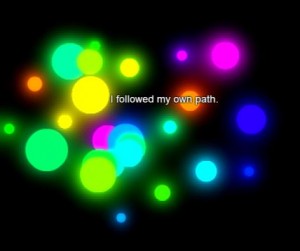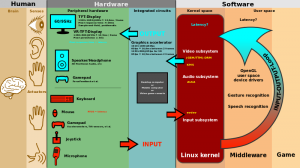My blog topic for August is ‘digital fiction and reading’. It focusses on a form of literature, much like a previous post on digital comics, which can only ever be read in a digital context.
Loss of Grasp, Serge Bouchardon (2010)
What is digital fiction?
Digital fiction is
Utilising the affordances of so called ‘new media’, digital fiction often contains hyperlinks, moving images, mini-games, or sound effects. Unlike e-books in which the reader moves from one page to another in a linear fashion, in many digital fictions, the reader has a role in constructing the text, either by selecting hyperlinks or by controlling a character’s journey through the storyworld. Digital fictions therefore usually require that the reader interacts with them throughout the reading experience.
Examples of digital fiction include: Web-based fictions (e.g. 10:01), CD-ROM based hypertext fictions (e.g. Patchwork Girl), Flash fictions (e.g. The Princess Murderer), app-fiction (e.g. 18 Cadence), and also what Ensslin (2014) calls literary videogames (e.g. The Path). Digital poetry (e.g. Faith) and kinetic literature (e.g. Strings) are other forms of digital literature.
Researching Readers and Digital Literature
As part of the AHRC-funded Reading Digital Fiction project, I am currently investigating how readers read digital fiction. This study will synthesise narratological and stylistic analyses of individual works with reader-response data to offer an empirically grounded means of understanding how readers process, respond to, and interpret particular linguistic and multimodal features within digital literature. The research is similar to network member Sara Whiteley’s projects on the language of reading. It incorporates lab-based methods as well as reading group discussion. It also raises some important theoretical and methodological challenges for reader-response research because of the born digital nature of the texts we’re using.
1. Multimodality: Firstly, given that digital literature also often contains sound and image as well as text, we need to think about how those different modes affect reading and associated literary interpretation. This means assessing the extent to which theories of reading which have been developed largely in relation to print can be used to analyse digital forms of narrative and finding ways of supplementing them where required.
2. Interactivity: Secondly, the interactive nature of digital literature is essential to understanding how readers read it. Of course we interact with all forms of fiction. We turn the pages of print novels, for example. However, while in print fiction, interactivity is designed to go unnoticed or else has become so intuitive that we don’t notice it, when it comes to reading digital literature, interactivity is an integral part of the experience. This is because the narrative often responds to the reader’s input. We have to use the the computer mouse to click, double-click, hover, scroll, drag and drop. We might manipulate the computer interface by pressing keys on a keyboard or swiping a touchscreen. Some forms of digital literature, such as Kate Pullinger’s The Breathing Wall are navigated using the reader’s respiratory system. Interacting with digital literature embeds readers in a very physical form of communication with the machine used to display it. Reading digital literature therefore involves cognitive and kinetic elements.
3. Unfamiliarity: Lastly, and perhaps the hardest challenge is finding readers who are familiar with and therefore not phased by the digital reading experience. Readers of print are everywhere and, media reports suggests that ebook sales are booming. It’s harder to find readers of born digital literature. Digital literature reading groups don’t exist (as far as I know). Previous reader-response studies (e.g. Pope 2006, Rustad 2006) report that inexperienced readers of digital fiction emphasise that unfamiliarity over a discussion of the narrative itself.
References
Bell, A., Ensslin, A., Pressman, J., Laccetti, J., Ciccoricco, D. and Rustad, H. (2010) ‘A [S]creed for Digital Fiction. electronic book review
Ensslin, A. (2014) Literary Gaming. Cambridge, MA: MIT Press.
Pope, J. (2006) ‘A Future for Hypertext Fiction’. Convergence 12 (4), 447-465.
Rustad, H. K. (2009) ‘A Four-Sided Model for Reading Hypertext Fiction’. hyperrhiz: new media cultures 6.

